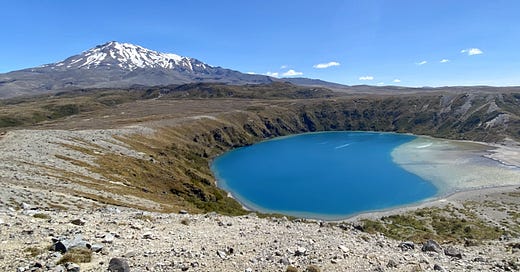People are choosing to move to warmer places🍋
In seeming contradiction of rising global temperatures
You’d have to be living under a rock in a rather dark cave to not have realised that the climate is warming. In 2023 surface temperatures were 0.60°C warmer than the 1991-2020 average, and 1.48°C warmer than the 1850-1900 pre-industrial level.1

A warmer climate is more prone to extreme weather, e.g. unusually high summer temperatures. You can see that happening on this data series for the US:

People can respond to global warming by taking action to reduce their own greenhouse emissions, and by supporting government policies towards the same end. But as the atmosphere is a global commons and the climate responds slowly to changes in gas concentrations, the effect of one’s actions on the local climate will be heavily diluted — and delayed.
If you don’t like the temperatures where you live, you might consider moving to a colder place.
Vote with your feet
A reliable economist’s rule-of-thumb is to pay more attention to what people do — and spend their money on — than what they say they care about. Moving from one place to another is costly, so most of us do it infrequently (or not at all). The aggregate effects of our choices to stay or go get recorded whenever a census is conducted.
So, how are New Zealanders responding to a warming climate? Are they seeking to maintain the temperatures they enjoy now by moving towards the South Pole? Or staying put and accepting a slow warming?
The census data contradicts both of these options. New Zealand’s median centre of population (i.e. the point at which half of the population live north of, and half live east of) has moved 280 kilometres north since 1921.
It seems that New Zealanders have been voting with their feet for a warmer climate for a century or more. And that trend has continued in the face of warming temperatures.
Americans are chasing the sun
The story is the same for Americans. Since 1930 the US population centre has been moving towards the sunny states of the south and west.
An Associated Press article predicts that the next data point to be due south, rather than towards the southwest. That article attributes southwards movement in the 20th century to the spread of air conditioning, which made the South more livable.
A US survey of 1000 people who moved in 2022 reported the reason they gave for moving. The top three were better quality of life, lower cost of living, and upsizing (i.e a larger house).
Climate preferences would likely be subsumed into better quality of life. If that is so, then people are moving to what they perceive to be a better climate, and that (on average) is a warmer one.
The equator is calling
The UK’s population is also moving south. Australia’s is moving north. Indeed, in all but one of the countries reported on Wikipedia’s centre of population page, the population is moving towards the equator. (Estonia, the one exception, is geographically small — it doesn’t offer much in the way of latitudinal variation.)
I’m a regular skier and occasional mountaineer. I enjoy cold places and snow. The warming climate is melting glaciers, and, in the long run, will make New Zealand skiing marginal. While I live in Wellington, my travel choices are strongly biased southwards. But I have to recognise that my cold-climate preferences put me very much in a minority.
Warm-climate preferences appear to predominate in New Zealand and in the other countries for which I could find data. These preferences appear to be long-standing. How warm would the planet need to get to overcome those preferences? I will be looking out for StatsNZ’s update to the median centre of population based on the 2023 census.2 My pick is that the 2023 centre of population will be north of the 2017 centre. I’m happy to be proven wrong!
By Dave Heatley
Source: Global Climate Highlights 2023.
As I read StatsNZ’s timeline, this data will be published in early 2025.










Thanks for your latest article Dave. They are always in interesting read. This one got the Geographer in me thinking; how much of the northern shift in our population centre is driven by immigration into NZ, with most migrants choosing to settle in the Auckland region (I'm not sure that's even the case, but I'm, wondering if it is)? If those migrants have moved from places closer to the equator, you'd have to say at a global level (rather than national) they're part of a trend that's moving towards cooler climes (and just think for a moment of those trying to migrate north into Europe or North America). Also, that bigger national trend (towards Auckland/Hamilton /Tauranga) could be masking a trend in the opposite direction which is seeing those who can afford it, migrate south to Queenstown, Wanaka and Central Otago, where they're able to escape some of that northern humidity - not to mention traffic congestion (and the odd bit of urban blight) but with an international airport (and internet infrastructure) that keeps them sufficiently connected.
In respect of the US, and in so far as moving southwards is climate related, it might be motivated by a desire to avoid the awful winters in the northern states with summers in the southern states simply being judged less awful. Expressed in economic terms, the whole distribution matters rather than just the mean and utility over the extremes is not symmetric.